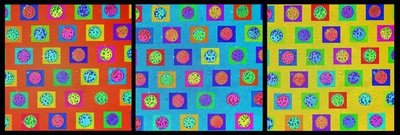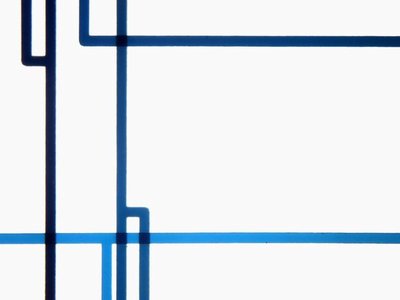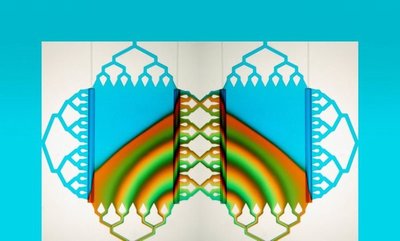November 4, 2010
Bringing art to the Commons
The pieces hanging on the new Research Commons’ walls might at first seem to be modern art. On closer inspection, however, visitors will learn that the images originated from a UW research lab.
The images were created by the lab of Albert Folch, an associate professor in the Department of Bioengineering. The “Bringing Art Into Technology” exhibit, BAIT for short, features works taken as part of the group’s research in microfluidics. (See previous UWeek article, Small is Beautiful: Gallery Celebrates the Art of Microfluidics Research.)
“We felt that his work would be perfect for the Research Commons, because it blends art and science into an educational experience, and is about looking at scientific information from a non-traditional perspective,” said Lauren Ray, the educational outreach services librarian at the Research Commons.
“Like the BAIT project, the Research Commons is about interdisciplinary collaboration and approaching information-sharing in a way that is both experimental and inspiring.”
At Tuesday’s opening Folch will give a short talk explaining how the images are created. Most pictures are first taken by students through a microscope, and Folch then manipulates them by cropping them, altering the color or creating mosaics.
The BAIT collection premiered at the Harborview Medical Center (see our article here) with about 20 pieces, and afterward moved to Meany Hall for a year. The collection has grown to about 50 framed pieces, of which thirty-some will be on display in the Allen Library.
The Research Commons setting provided some special challenges.
“This space is experimental,” Folch said. “The walls are very vivid colors, so not everything was matching. There’s a very chlorophyll green wall and a fun yellow wall and a fiery red wall. Some of them don’t necessarily match some of the paintings so we had to choose other ones.”
The images are from research on liquids and cells. Microfluidics, the science of liquids at small scales, is crucial for building medical diagnostic devices that could fit in a pocket, making healthcare cheaper and more portable. In microfluidics labs, researchers color the different liquids to study how they move and mix in the structures. As this project shows, the results are often beautiful.
“The exhibit is called BAIT because the image works as the bait for the learning experience,” Folch said. “When you walk into the room you’re attracted to the beauty of the image, but then hopefully you get curious about what that is, and then you go and read the text, and you learn a little bit of science. So you walk away with some enjoyment of the artistic experience but at the same time you walk away having learned something.”
The exhibit will be on display in the Research Commons at least until the end of the year.



